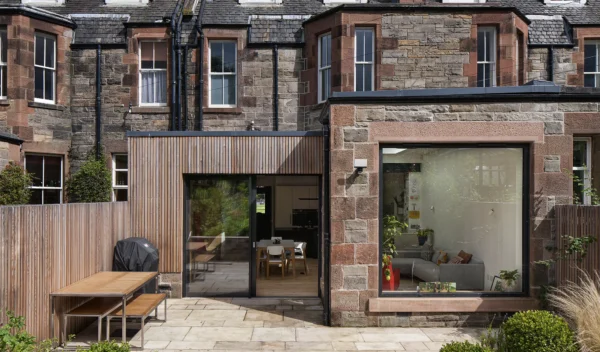Q&As
CIL Self build exemption if you have no self build warranty, mortgage or VAT reclaim
As you know you can apply for exemption from CIL if you are building your own home, and intend to live in it as the owner/occupier. CIL self build Form 7 part 1 all seems very straightforward.
However, the CIL self build Form 7 part 2 (section B) which must be submitted 6 months after completion asks for one of the following evidences, otherwise you are disqualified from exemption:
1. Self build mortgage
2. Self Build warranty
3. VAT reclaim form as a selfbuilder/ DIY
The issue I have is that we bought a plot, built a house specifically for ourselves but we don’t have a
1. Self build mortgage - we didn’t need funding
2. Self Build warranty - we didn’t want/ need a warranty as we have an architect providing a Consultants Professional Certificate (formerly known as a Architects Certificate)
3. VAT reclaim form as a self builder/ DIY - although we spent many hours working on the project (labouring and building) for no salary, we used a main contractor for the majority of the work who zero rated the VAT and we didn't reclaim the VAT. I think this is described as a ‘self build turnkey’ project.
Have you ever come across a similar scenario? Any thoughts/ guidance on how to get around self build exemption given this scenario?





































































































Hi Andrew,
Sorry to hear of your dilemma. The trouble is that there has to be a line somewhere between a self build and a spec built house constructed by a developer.
In this case, you’re a cash buyer who has commissioned a builder/developer to build your house. But the absence of a mortgage and a warranty, as well as lack of a VAT reclaim, means that to HMRC it does not meet the self build threshold.
Did you buy nothing at all for the project yourselves? Even a small VAT reclaim would suffice. If not, HMRC will see this as pointing towards contracted out development rather than self build.
The easiest thing to do would be to get a self build structural warranty and apply it retrospectively. It might cost a bit more, but I would argue that you should really have one anyway. An architect’s certificate does not provide the same cover at all. It will cost a few grand, but I’d expect it’s a lot less than the CIL liability.
Unfortunately you can’t have it both ways – saving on the warranty and still expecting exemption leads to exactly this situation.
Hope you can find a solution!
Best wishes,
Mike Hardwick (Build It expert)
Vat is reclaimed on new build irrespective of it being self build or for sale so how does it have any bearing on the definition of self build? Also a self build mortgage or a self build warranty have no bearing on how a house is defined as self build. To claim self build exemption you have to live in the property for 3 years or you have to pay the full cil. This, in reality is all that is needed for self build definition but the government always have to make things grossly over complicated. The charging levels of cil in some districts are nothing short of outrageous. As much as £36,500 for a 100m2 property. I don’t know what you mean Mike by “you can’t have it both ways”. Many people would build without a warranty. Why would that exclude them from exemption?
Hi David,
You raise some interesting points. The truth is that CIL is a confusing and divisive issue. What has become clear through various recent court cases etc, however, is that you have to abide by the letter of the legislation and the requirements of the forms to access the self build CIL exemption.
The specific self build exemption, as per government guidance, is “available to anyone who builds or commissions their own home for their own occupation.”
Unfortunately there will always be people who want to game the system, so the government and councils want some form of proof that you have commissioned or built the project yourself.
Living in the property for three years is not considered enough on its own to claim the exemption – after all, you could live in a spec-built developer house for three years, for instance, but you won’t have commissioned that yourself.
At present, the only permissible forms of proof are the three options set out in Form 7 (self build mortgage, self build warranty or an approved self build VAT reclaim).
The only one of these routes that appears to be available to Andrew now is getting a self build warranty. Unfortunately, it is much more expensive to get retrospectively than it is to arrange a warranty before you build – but it should still be much cheaper than CIL fees!
So I think Mike is trying to kill two birds with one stone here – give Andrew some advice to help him minimise his losses, while also warning other self builders that they could face the same issue if they don’t have adequate proof of their project status.
Best wishes,
Chris (Editor, Build It)